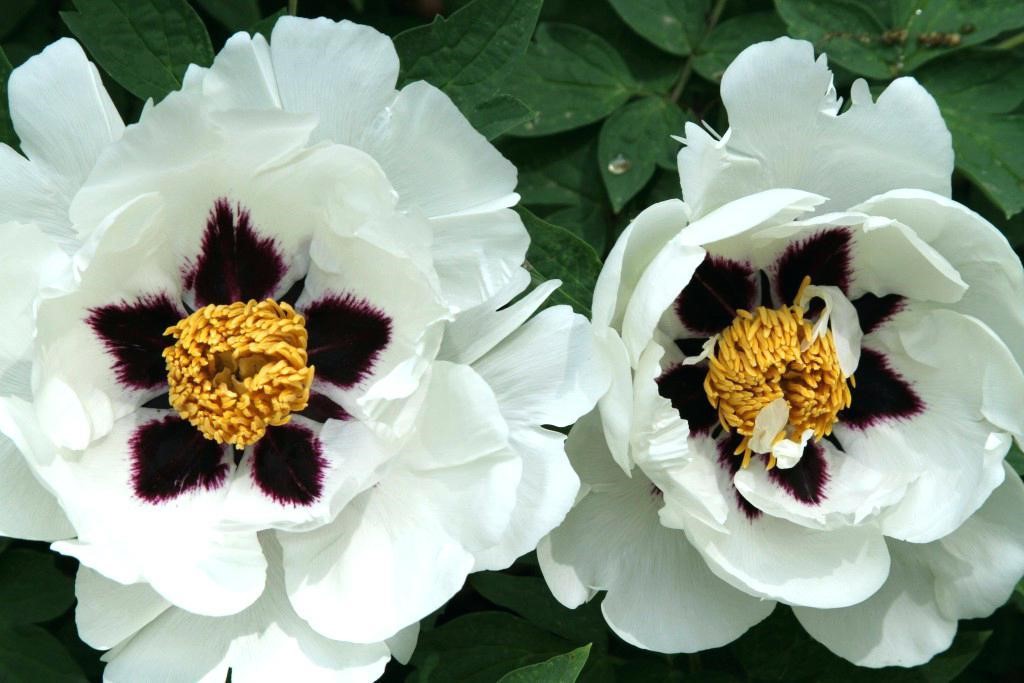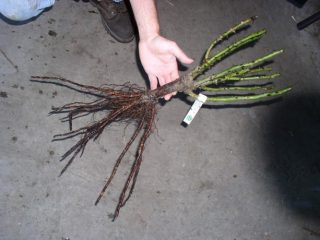Content
Peony Snow Lotus is a perennial plant with large flowers and a pleasant aroma. It is grown throughout Europe and Asia, and is actively used for landscape purposes in Russia. The culture has strong immunity, it rarely gets sick and also rarely causes trouble when growing.
Breeding history
It is not known exactly when and who developed the variety. The author is probably not the scientist. The bulk of tree peonies are grown in China. They are hybrids obtained under artificial conditions as a result of crossing. Snow Lotus is also a hybrid plant.
Description of the Snow Lotus peony with photo
Peony stems have a powerful structure, while maintaining the compactness of the bush - Snow Lotus grows no higher than 130 cm. The culture is characterized by good branching.

The crown is made up of dark green leaves with a carved edge
Snow Lotus is a winter-hardy plant that has become widespread in many regions of Russia.For example, it is grown in Moscow, Voronezh, Omsk, Kaluga, Altai, Rostov and many other regions.
Peony is decorative throughout the growing season. With its help, they create hedges and various flower arrangements. The shrub is unpretentious to external conditions; it can be grown in almost any area. Resistance to diseases and pests is assessed as high.
Timing and flowering period
At the end of spring - beginning of summer, the Snow Lotus forms its first buds. They reach 20 cm in diameter. After opening, you can observe wavy snow-white petals. In the inner part of the flower there is an unusual pattern made up of dark stripes and spots. It matches perfectly with the white background of the petals, so gardeners plant peonies in prominent places.
On the flowers of the Snow Lotus peony you can also see stamens. Not so large, but very dense and aromatic. From 25 to 60 buds grow on one bush, and every year the flowering becomes more luxuriant.
Advantages and disadvantages
Peony Snow Lotus is of great value to landscape designers. Flowers are planted in flower beds and rock gardens, and they are also used to make hedges.

Universal use is possible due to the high endurance of the plant
Pros:
- winter hardiness;
- bud size;
- sweet aroma;
- low demands.
Minuses:
- fragile petals can become deformed due to precipitation.
When and how to plant
Snow Lotus is recommended to be planted in places with access to sunlight. In this case, the bushes should not be in a draft. The culture does not tolerate cold winds. It’s good if the plant is protected by walls on both sides.
Planting is carried out in pre-prepared holes. The site is dug up in advance (30-40 days in advance). The soil is taken out to the depth of a spade bayonet, then fertilizing is applied and buried. After preparation, the fertilized area is watered. By the time the Snow Lotus peony is planted, you need to dig a hole 70 x 70 cm, lay down drainage and place the seedling.
The peony roots are directed in different directions, and the neck is left at ground level.
Care instructions
As soon as the seedling is in the soil, the soil should be compacted. After this, the Snow Lotus is watered generously with warm, settled water. The norm of moisturizing is 2 times a month; during periods of drought, the schedule is drawn up at your discretion. A seedling needs about 5 liters of water at a time.
During the growing process, weeds will form near the bush. It is better to weed them by hand so as not to accidentally damage the peony root system with the tool. You can deal with grass in another, safer way: cover the root zone with a layer of straw - mulch will prevent weeds from growing and save moisture.
Starting from the second year, fertilizers are used. During the formation of green mass, Snow Lotus requires nitrogen, and during budding - potassium and phosphorus.

Fertilizing is applied at least twice a year
A sanitary haircut is a procedure whose importance is often underestimated. To speed up the pace of development, diseased, weakened shoots must be removed. In this way, the bushes are rejuvenated. Pruning is carried out in spring and autumn; in the latter case, it is necessary to collect foliage from the crown to prepare the crop for winter.
Wintering
Before the arrival of frost, the bushes are cut short (up to 4 cm). If the climate is not very harsh, you can tie the stems and cover the plant without pruning. Spunbond is used as a covering material.In winter, you can additionally cover the peonies with snow.
Reproduction methods
Snow Lotus is easy to propagate by stem cuttings, but the summer resident will see the first flowering 4-5 years after planting. This method is useful for rejuvenating the bush; it is also suitable for growing valuable varieties for sale.
Almost all peonies can be propagated by seeds. True, the method is not widespread due to the need to germinate the material. This procedure takes a lot of time and effort. To increase germination, it is recommended to use your own seeds. They should be light brown, hard to the touch and slightly cracked. To prevent the raw material from drying out, it is placed in damp sand and sent to the refrigerator. Storage duration is up to 45 days.
Peony Snow Lotus is also grown from cuttings. Propagation is carried out at the end of spring: you need to dig a hole, bend the stem in its direction and dig it in. The cuttings are watered and covered for the winter. The next year, check whether the root system has formed. If not, they continue to grow; if the result is positive, the cuttings are removed from the mother peony.
Dividing the rhizome is the most effective way, in which the Snow Lotus peony blooms profusely by the second year. In the first half of August, buds form on the roots; they germinate throughout the year. The summer resident must catch the moment when the formation is not completely finished - and dig up the bush. After digging, wash the roots in warm water, divide and plant in open ground.
Disease and pest control
Growing unattended can cause Snow Lotus peonies to develop unhealthy spots.Brown spot, botrytis, powdery mildew are the most common diseases.

The plant is restored using Bordeaux mixture and copper-containing fungicides
In addition to diseases, insects pose a danger:
- ants;
- bronzes;
- aphid;
- spider mites.
Usually, if ants appear, aphids also arrive, since the pests enter into symbiosis. Both are dealt with with chemicals - insecticides.
There is no drug against spider mites yet, so the plant is treated with complex agents. Bronzewort is repelled by fragrant crops; they are planted next to the Snow Lotus peony.
Application in landscape

Snow Lotus is a bright peony, so the main emphasis is placed on it when grown in group flower beds

The plant is often cultivated separately

Peonies are recommended to be grown along fences
Due to the fact that the green mass is very dense, the bushes protect other plants from drafts.
Conclusion
Snow Lotus Peony is a perennial shrub widely used by designers. Florists also value it for its aroma and ability to stand for a long time when cut. Every year the flowering becomes more and more luxuriant, so adult specimens are an order of magnitude more beautiful than young ones.
Reviews from flower growers about the Snow Lotus peony








